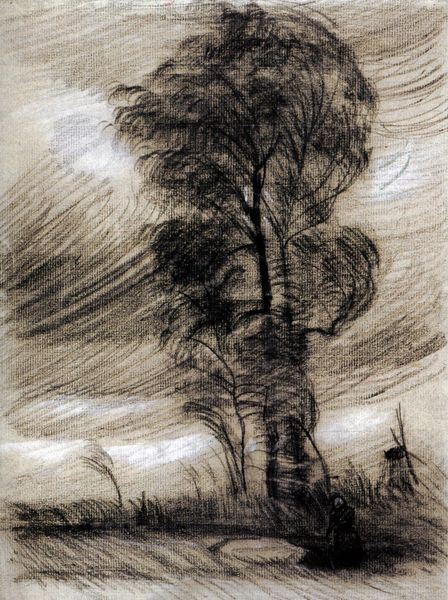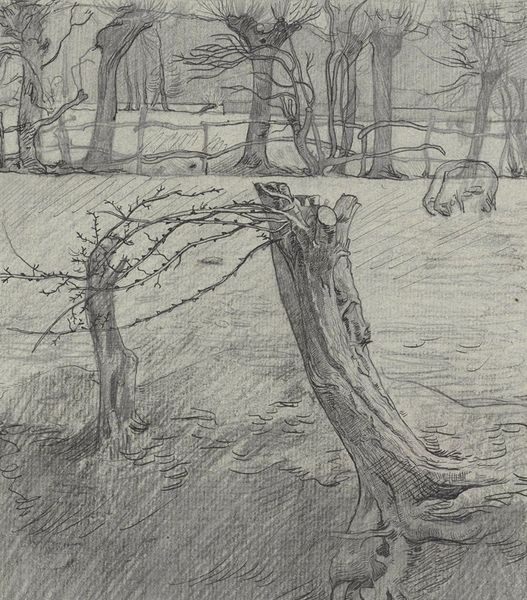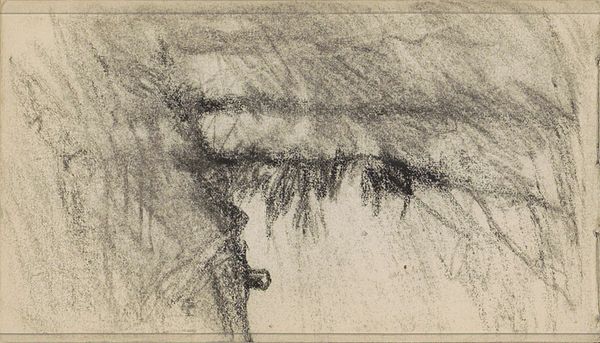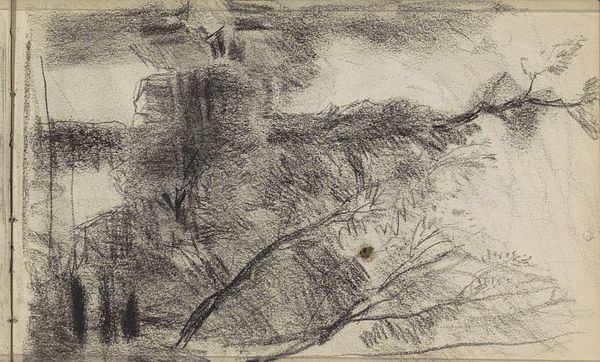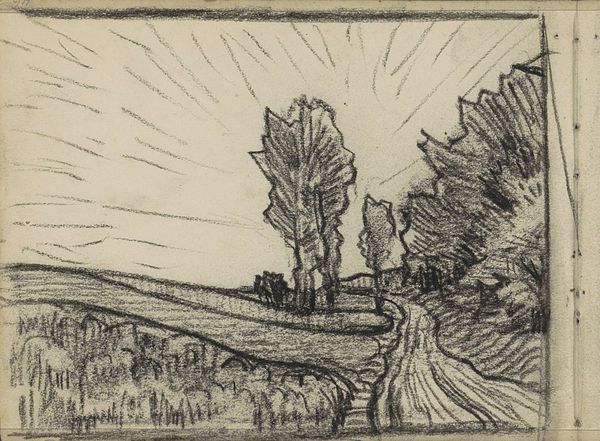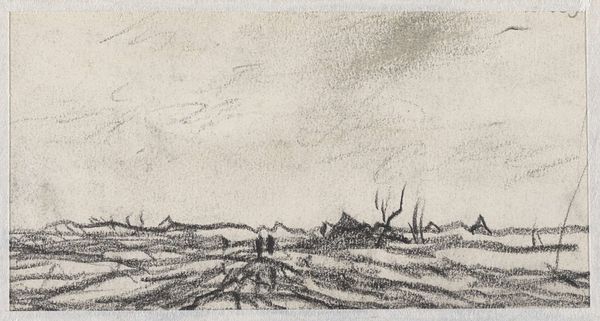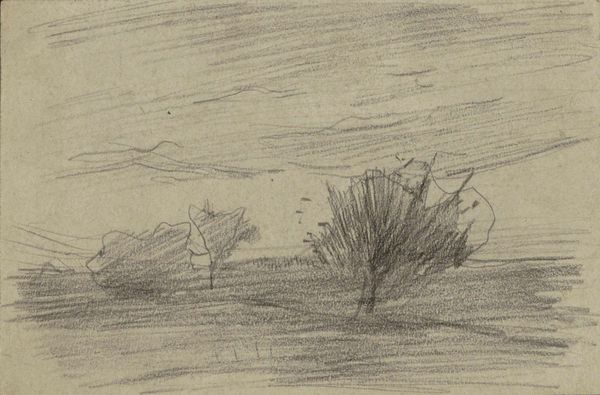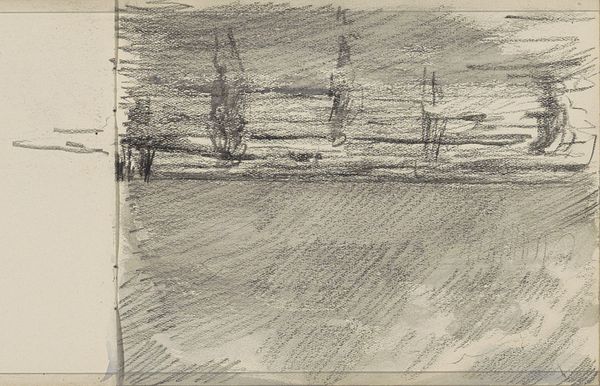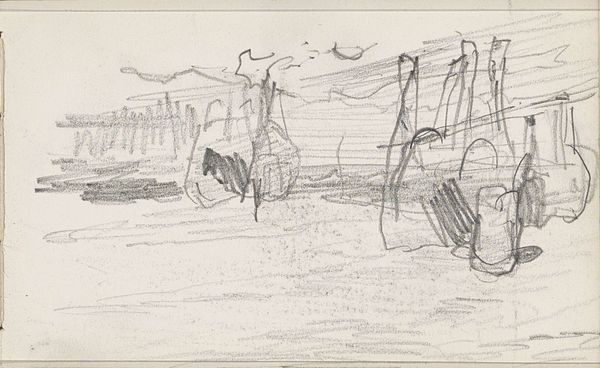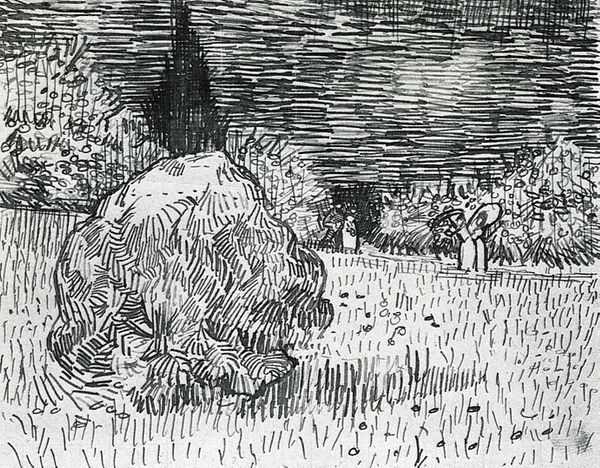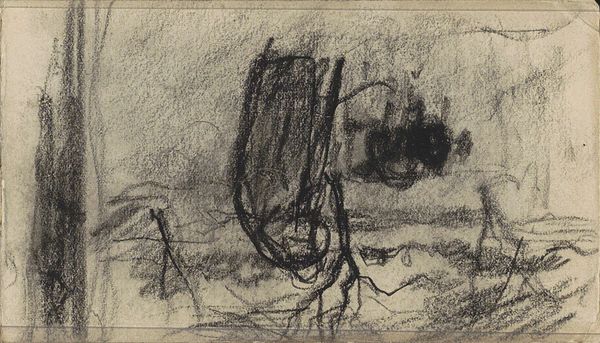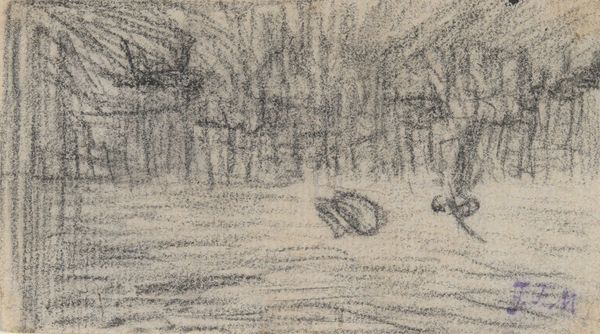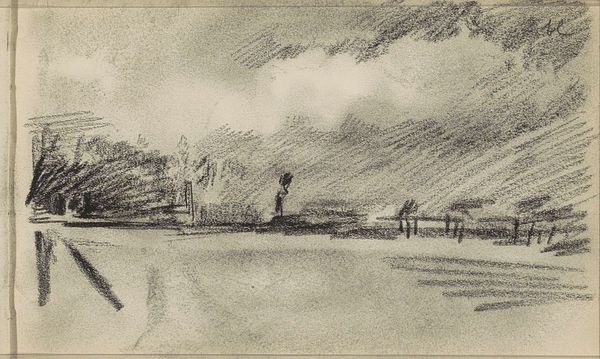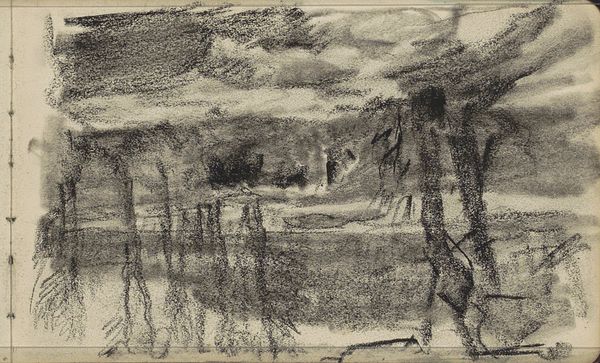
drawing, graphite
#
drawing
#
impressionism
#
landscape
#
line
#
graphite
#
post-impressionism
#
realism
Copyright: Public domain
Curator: Looking at Van Gogh's drawing "Stooks and a Mill" from 1885, it's interesting to note the artistic transition taking place. Editor: There's an immediate sense of stillness, yet also impending change here. A feeling that is conjured by the heaviness of the graphite against the tan paper and the converging diagonal strokes creating dynamic patterns across the scene. Curator: It's intriguing how Van Gogh represents rural labor in the Dutch art world of the 1880s, wouldn't you say? "Stooks and a Mill", executed in graphite, exemplifies this. It seems that the traditional artistic representations of landscapes were being disrupted, right? Editor: Absolutely. It really feels like Van Gogh’s personal exploration is on full display, here, reflecting his own positioning on the social margins. I see the rendering of the stooks – those carefully arranged stacks of harvested grain, typically wheat, barley, or oats. It evokes broader discourses on economic systems and class structures that determine rural experiences. Curator: And in that period, windmills were, in a way, a statement on Dutch national identity—both then and now—in a shifting socio-political terrain. He was also engaging with popular and commercial imagery of rural life, something we’ve also been seeing across multiple artistic arenas. Editor: Looking at it with fresh eyes, that use of line certainly holds up, lending form to the haystacks and giving depth to the receding fields. This choice offers itself up as both expressive of his individual vision as an artist but is also an aesthetic intervention of traditional understandings. The drawing feels charged by this choice. Curator: It really captures the nuances within Dutch visual culture itself and how artistic depictions helped construct societal understanding. It adds a unique texture to that chapter in Dutch cultural heritage, no? Editor: Absolutely. Van Gogh, though not widely celebrated during this period, undoubtedly anticipated later artists in their deconstruction of traditional values and the construction of new models. It’s nice to consider the work in that sense.
Comments
No comments
Be the first to comment and join the conversation on the ultimate creative platform.
